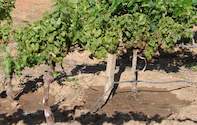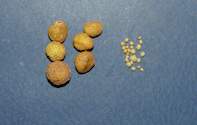
Ten different species are found in South Africa, but only five of them can have an economic repercussion for a vineyard. A large number of plants, especially grasses, are damaged. With the development of especially new vineyards it is important to know which crops serve as natural host plants for margarodes.
Thus, a possible natural contamination can be prevented. The camel-thorn tree (Acacia erioloba), widely found in the Orange River and Mpumalanga areas, has recently been identified as the natural host plant of one of the margarode species.
The natural host plants of the other South African species are still unknown. No registered chemical control of margarodes is currently available, but it is recommended that tractor tires and other tools be cleaned when moving from a contaminated vineyard block to uninfected blocks.
